Cuba si, Cuba cigars
Havana enthusiasts are worried. For many months, their guilty pleasure has been hard to come by. Or they have to cough up extraordinary sums of money to buy them. But how are things playing out in Cuba?
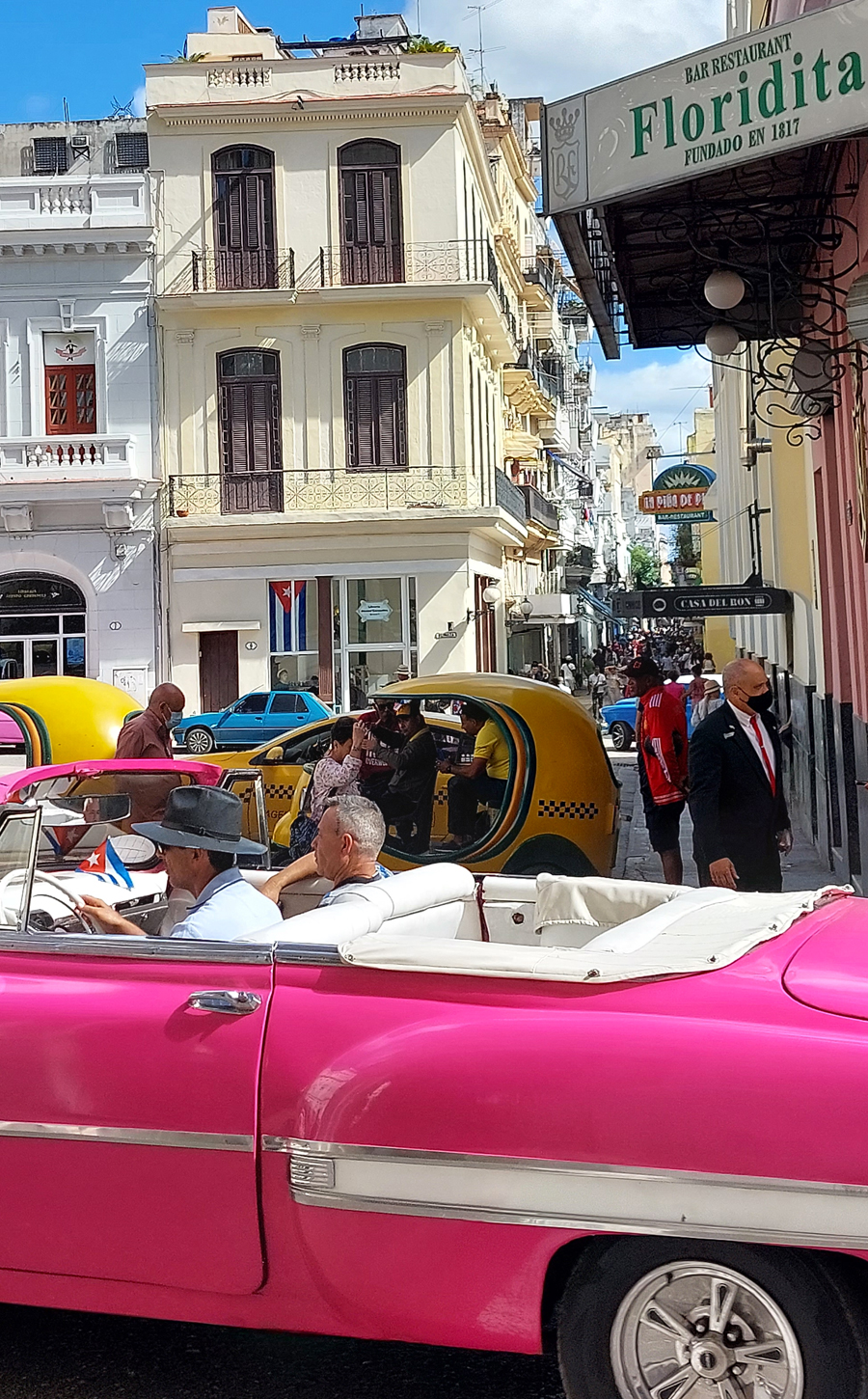
On 27 and 28 September 2022, panic spread across Viñales as well as San Juan y Martinez, as Hurricane Ian blew through the main tobacco-growing region, with winds over 200kph. Cuba was put through the wringer. The electrical grid was shot to pieces, 40,000 people were rendered homeless, and 10,000 of the island’s 12,000 tobacco leaf dryers were destroyed, as well as the year’s crop. For those who roll the best puros in the world, this was nothing less than a disaster.
By the time losses were mourned and arrangements were made to fix what could be fixed (only 5,000 leaf dryers were rebuilt), Cuba was feeling the consequences of the shortage.
Price adjustments
In Europe, the aisles of tobacconists remain empty, and people are quick to point fingers any which way. Chinese smokers, American dealers all to happy to eat the forbidden fruit (the US embargo against Cuba prohibits all trade with the island, so no cigars can be officially sold there), or narcos hidden away in the Gulf, never to be outdone when it comes to a good deal. As a result, importers fighting over the few boxes that can be delivered are applying hair-raising markups. It’s the law of offer and demand, you see… Basic units are now dangerously approaching the 10 euro mark, nicer Havanas are priced around 15 to 20 euros each, while lighting up a high-end vitola can set you back over 50 euros. A costly smoke indeed…
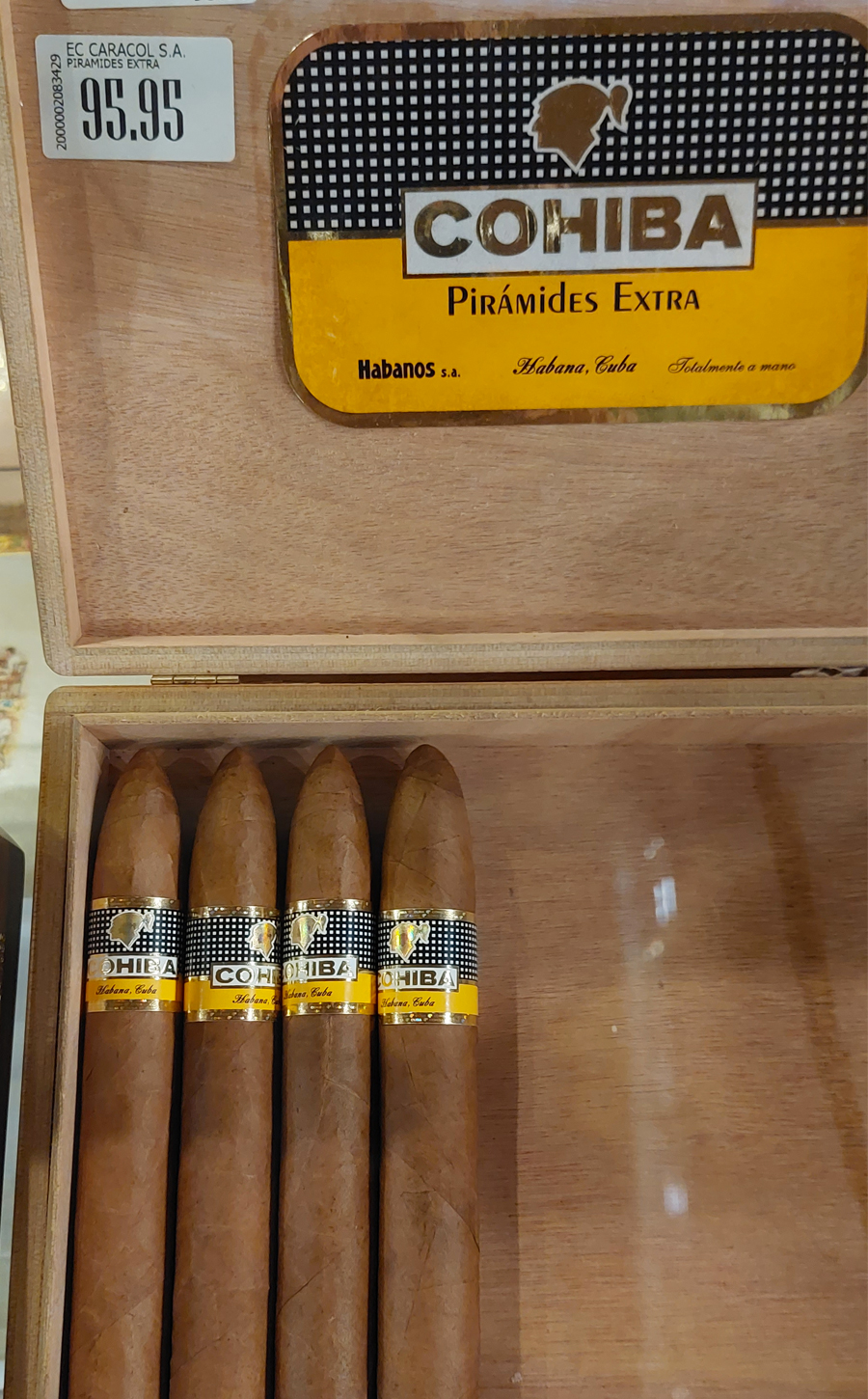
On the streets of Havana, where the average salary is below a hundred euros, the mind boggles. So the Cubans once again prove how resourceful they are. Down here, the cigar is part of the everyday. Everyone, no matter their age or social class, enjoys the pleasure of puffing away on a puro. That photograph showing Fidel and the Che, stogies hanging from their mouths, albeit legendary, illustrates just how commonplace this is, a scene familiar to the island’s 11 million inhabitants. In Cuba, smoking is about being social, it’s a shared delight, a break that is enjoyed as a group. If this ordinary activity becomes a luxury over the border, then there must be some cash to be made. Smart. Alternatives are popping up.
The shop at the Nacional
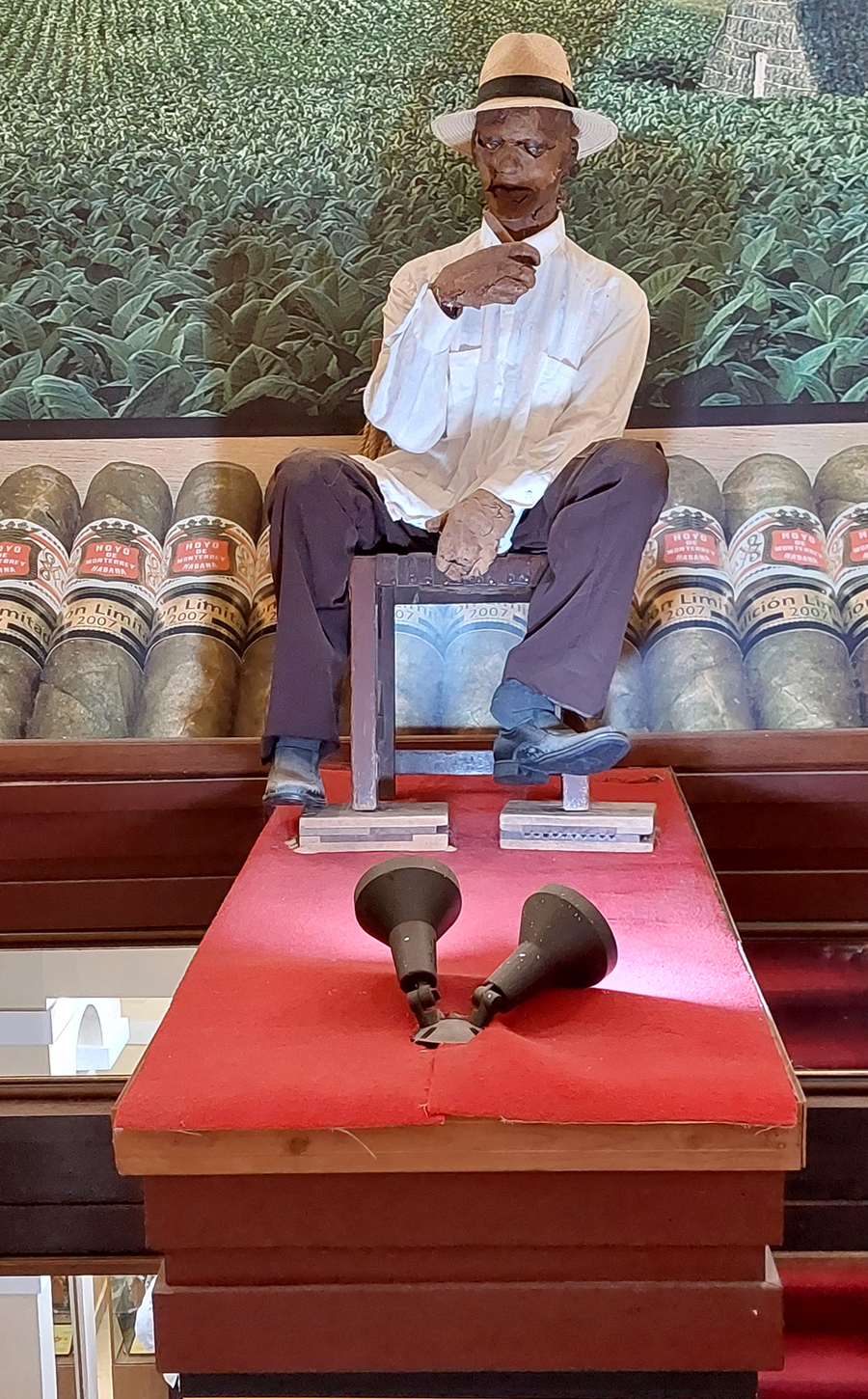
During their stay, visitors will discover the cigar ritual. They will inevitably want to acquire for themselves the object of happiness, best enjoyed with a sip of ron, Cuban rum, the other national claim to fame.
Our first suggestion: crossing the threshold of government-owned shops, selling the best-known brands, Partagas, Hupmann, Cohiba, Romeo y Julieta, etc. Air conditioning, well-stocked shelves, perfectly aligned boxes, and smiling shopkeepers. Magnificent. Yes, but spirits are soon dampened by the price tags – they’re nearly the same as those in Paris, Barcelona, London, and Berlin. No good deal to be had, then. Although, they can be bought individually everywhere you go, making it easy, with a little paper, to end a night of mojitos, lobster, and salsa on a high note.
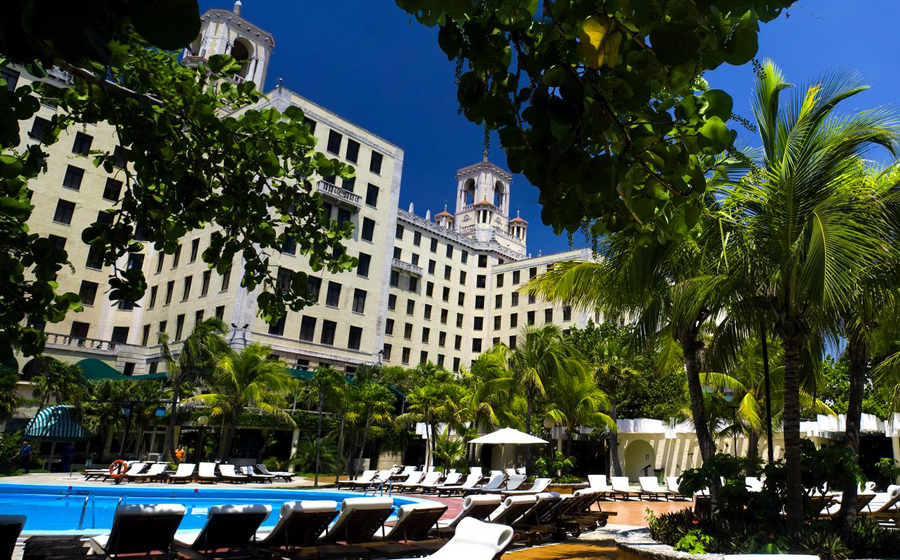
In the same vein, it might be a good idea to visit the stately, official shop on the ground floor of the mythical Nacional hotel in Havana. Truly marvellous. The sight of one of the country’s finest cellars is a feast for the eyes, but some units are verging on 100 euros each (Cohiba Esplendidos). “Do you sell a lot of these?” I enquired. “Several, every day,” admitted the shopkeeper.
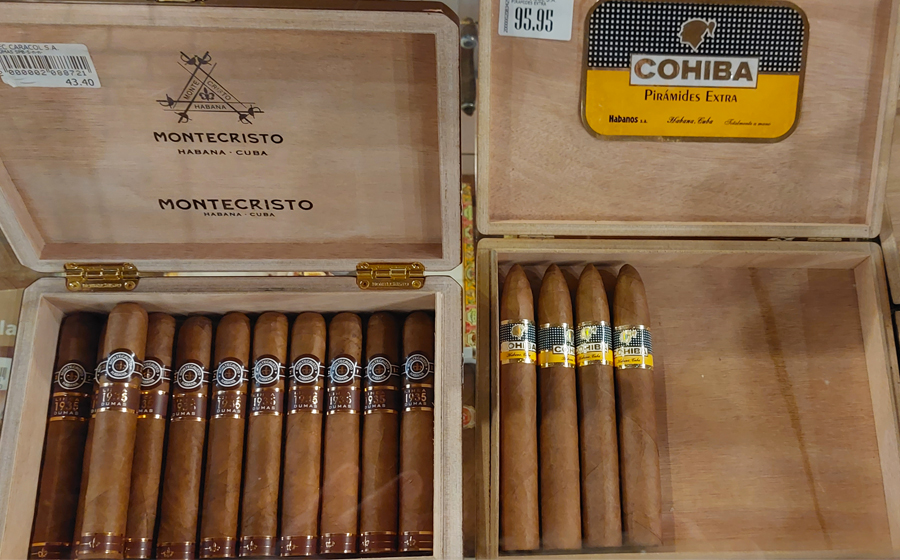
You could also go straight to the source and visit a cigar manufacture, for example Partagas in Havana. Don’t expect a miracle on the rates, they’re not getting any lower. But still, it’s a pleasure to see the brand’s whole range so beautifully displayed, and you get to witness live hand-rolling.
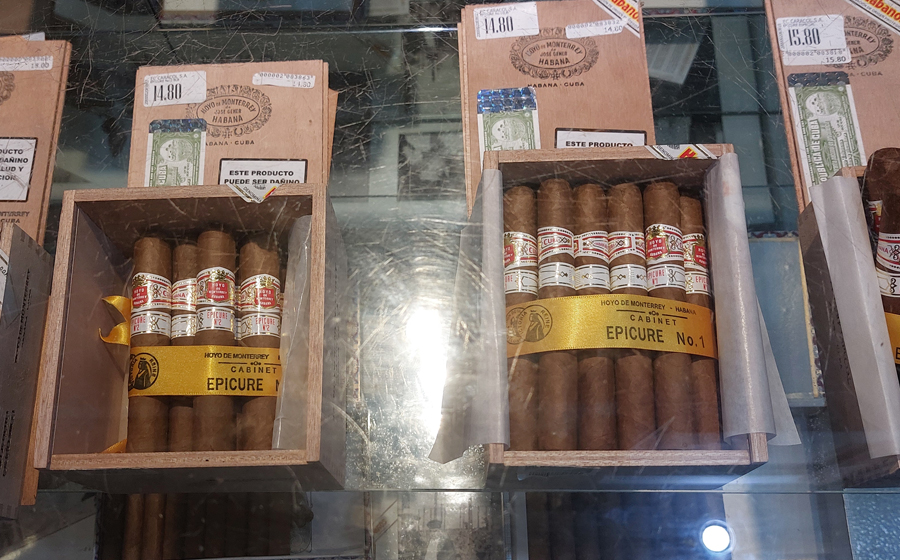
The BHK rumour lives on
Enough of that, let’s find another solution. Forget the streets, “cigars, my friend, Cohiba, amigo?”. Too hit and miss. You get them for a song, but they’re rip-offs, obviously, made to look real using bands and seals. The illusion breaks as soon as you light one up.
Seek and ye shall find. Speak with market-savvy Cubans that you can trust: a guide, a neighbour, a driver, a hotel waitress. This informal circuit lives on through friends of friends of friends, and through boxes that have, as they say, fallen off the back of the truck. Truth be told, these are underground operations, organised by workshop employees trying to earn a bit of spending money. Every brand is fair game. The upside: these are genuine, although missing their official seals.
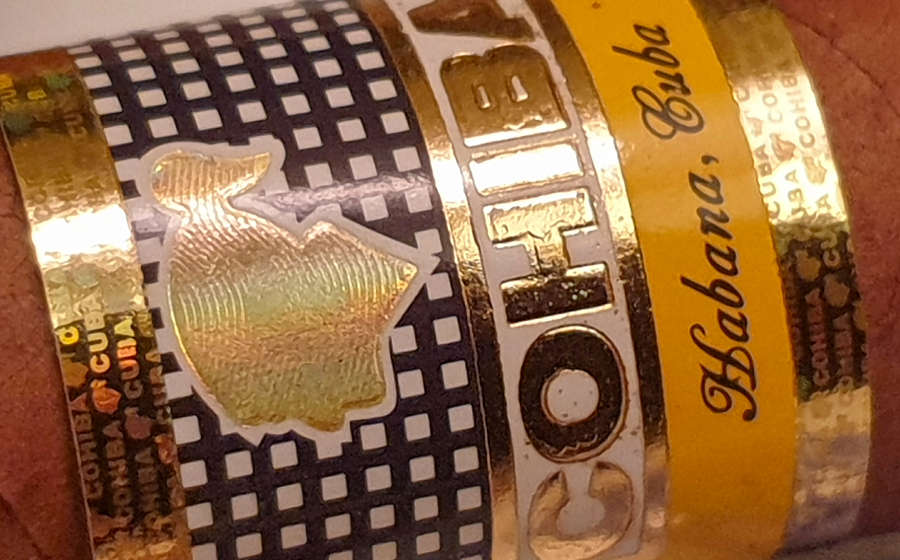
Their appearance runs the gamut, from bundles in newspaper to officially-labelled boxes you would find in a shop. Rates vary at the seller’s discretion. About a hundred euros for the best stuff – Monte Cristo or D4, Cohiba if you’re lucky. Although… Rumour has it that the underground circuit is the key to finding Cohiba Behike 56, the Rolls Royce of Havanas. These can run upwards of 160 euros in select tobacconists back in Europe. It’s just a rumour, of course…
Rough and ready
Another option: foreign visitors are allowed to pop into the government shops tasked with unloading cigars intended for the local population. Nothing like the products sold by big-name exporters funnelling dollars into the country’s budget: these are made from less noble leaves, sometimes even offcuts or scraps, and machine-rolled. Surprise, their quality is actually nothing to sneeze at. They sit on the shelves alongside basic necessities – oil, rice, sugar, eggs, soap, paid for using rationing tickets. Cigars are also part of subsidised rations: 25 units per person per month. Admittedly, these are a bit rough and ready, not exactly a delicate product, but some people can’t get enough. Selling prices are piddling, only one euro per stogie. A visitor asks if he can get one of those. Um, yes señor, but not so loud, please, and the price is now at 5 euros. No matter, the seller’s happy, and so is the buyer.
The alternative is downtown shops selling… religious paraphernalia (for example, at the corner of Obispo and Habana in Havana). They are popular with local practitioners of a form of voodoo (many Cubans have Haitian ancestry), and cigars are part of the worship rituals. These are sold loose, and although not all are created equal, it only takes one look to sort the wheat from the chaff. Some are surprisingly good, and they’re only about 50 cents. Well worth a little wink to the big man upstairs. Deo gratias, muchas gracias.
Read also: